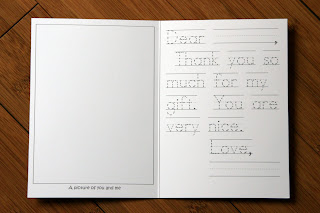I think we'd all agree as teachers that spelling is tough. But, as a teacher from down in the trenches, I can tell anyone that demanding that kids write the same words over and over and over again is not the most productive use of your or the children's time. Smart teachers have shifted away from rote memorization and endless tracing of inconsequential spelling lists and, instead, are spending their time figuring out ways to engage students. It's my experience that kids who truly are excited about any subject matter learn more and learn it faster. So how do we get them excited about spelling?
A Sidebar of Sorts
Before we talk about that, I want to digress for a moment and talk about students who have issues memorizing (there are many out there, not even counting those with identified learning disabilities). You know at least one student like this I'm sure and they are in a real pickle. There is no context for the words and there are no connections made. Now, in all fairness, sometimes the spelling words provided by the textbook you use rhyme, but more often than not, they are just a group of words that a publisher of curriculum happens to think were appropriate for students at that grade level. One size doesn't fit all. There are so many kids whose brains just work a little differently and, for those kids, spelling can be a huge problem.
Now back to the question:
How do we get them excited about spelling?
It starts with authentic learning experiences.
Kids need engagement in what they are doing. They need to see how and why spelling is so important. When we write something important, something we want to communicate, proper spelling is the common ground that helps our readers understand what we want them to know or feel or "get". Tracing a list of words does not help students make essential connections that they need to make to learn how to spell words, or retain that information. It doesn't help them be able to communicate clearly.
TRACING AS A TOOL
I believe it's just fine to have young kids trace words to help them learn how to spell but here's the catch -- the words have to be meaningful. A list of random words is not meaningful. A letter to a friend, on the other hand, often is. A story written by the child himself is meaningful. An article about the child's favorite sport or musician is meaningful. It's our job as educators to find out what interests our students so we can help them make those connections.
You can certainly use the tracing idea and even get a few volunteers from among your parents to help you create the "traceable" letters with a handmade dotted font like you see in the photo below. Students can dictate a few sentences or a short story and the volunteer or teachers writes what they say in the dotted font. Then, when that student is excited about the story he has "written", allow him to trace over the dotted font to write his story and then have him read it to you. He will probably want to do it more than once or even take it home to share. Offer this as an alternative at times to standard composition. Both practicing spelling and handwriting AND composing are important in the development of young writers.
TAKING IT TO THE NEXT LEVEL
While I was home on maternity leave this past January, I realized that I could turn a very simple idea I had used in the classroom for a long time (having children trace meaningful words) to help both with spelling and handwriting. With a little practice and the idea of hand-written cards, I came up with Letter Learning. I missed teaching and had a million thank you cards to write. Because both of these things were on my mind, the idea for educational greeting cards was born.
 I remembered how my own students struggled often with spelling and handwriting, and knew how much they loved their family and friends. I also knew that young kids love to be "like Mom" and since 80% of greeting cards are sent by women, so it seemed that greeting cards that help kids learn to write and spell was a long overdue instrument. Here's an example of what one of my cards looks like on the outside:
I remembered how my own students struggled often with spelling and handwriting, and knew how much they loved their family and friends. I also knew that young kids love to be "like Mom" and since 80% of greeting cards are sent by women, so it seemed that greeting cards that help kids learn to write and spell was a long overdue instrument. Here's an example of what one of my cards looks like on the outside:With the fun colorful pictures on the front and dotted line guides, kids love them!
Thanks, Ellen, for the great ideas.
NOW IT'S YOUR TURN
I'd love to hear how you work with young children to engage them in spelling and practicing their handwriting. Do you have budding authors in your kindergarten classroom? Preschool children who are just learning to print? Students in first or second grade who are still learning how to spell many words?
What are your most effective ideas? Sharing them in a comment post will help us all be better teachers.





